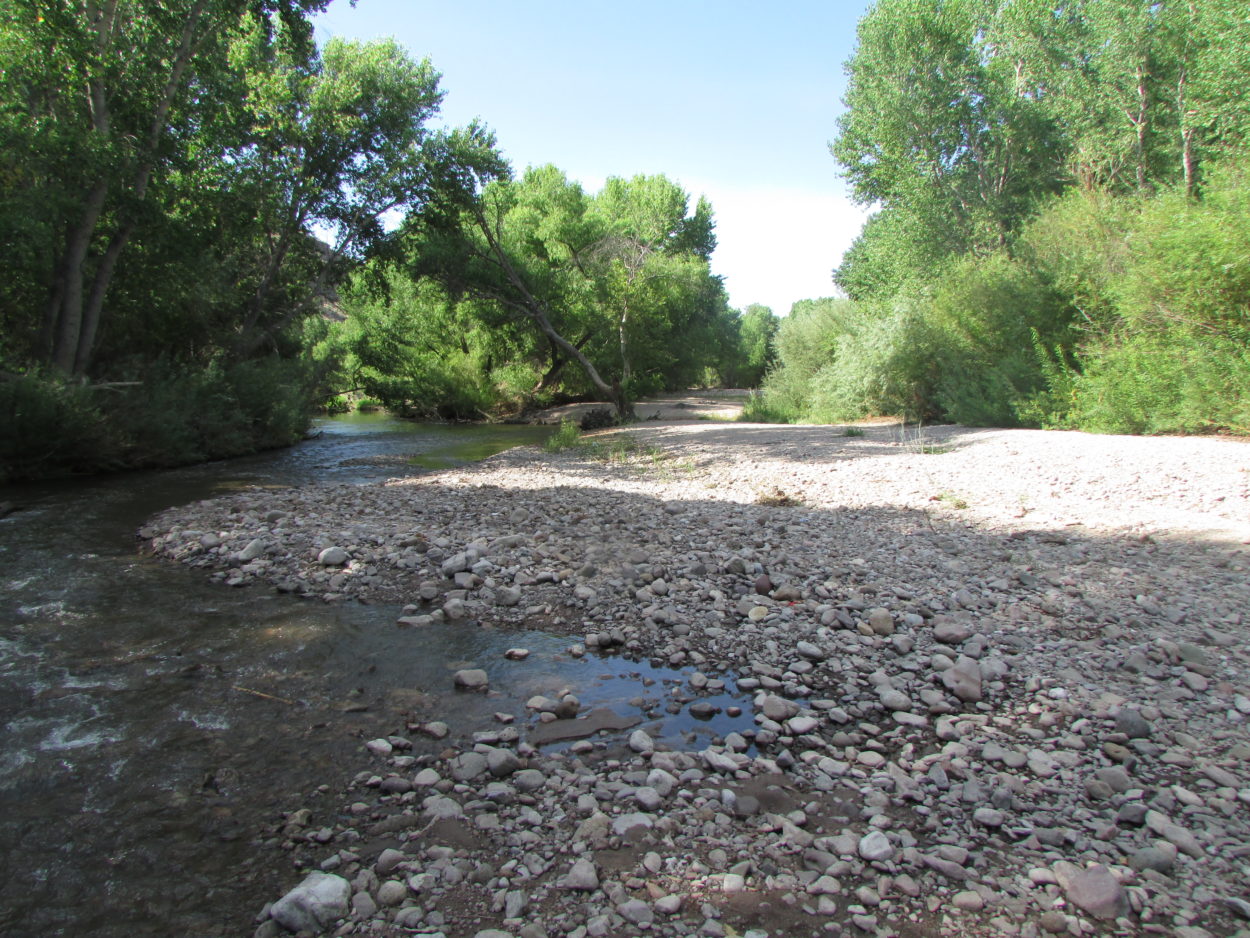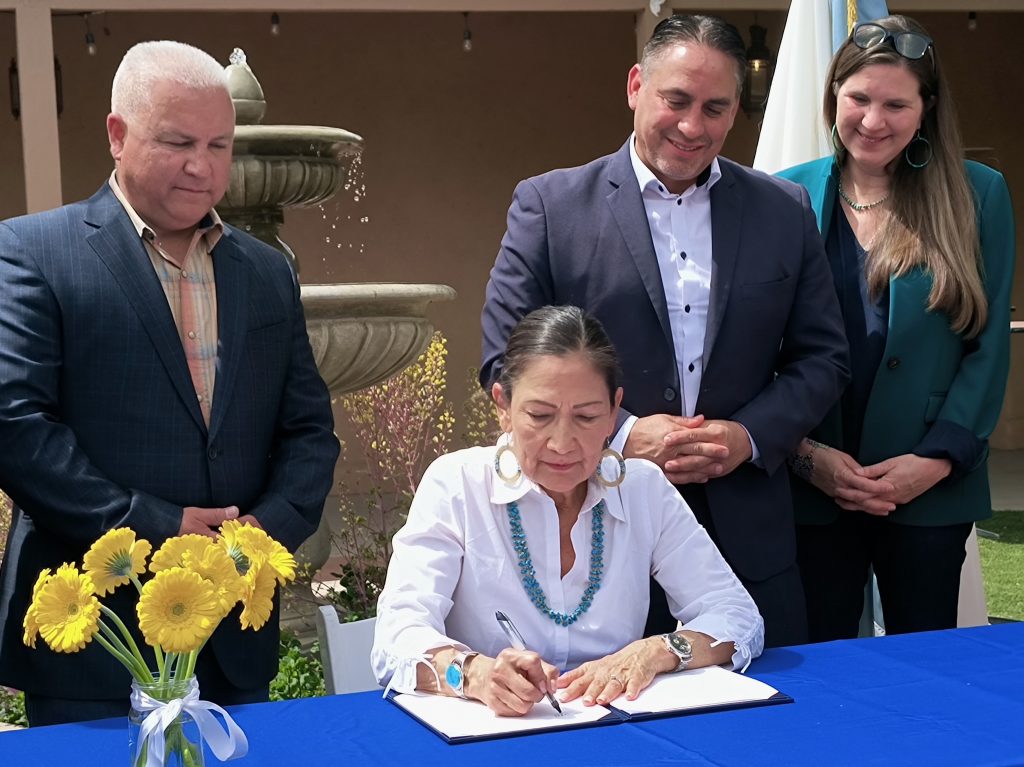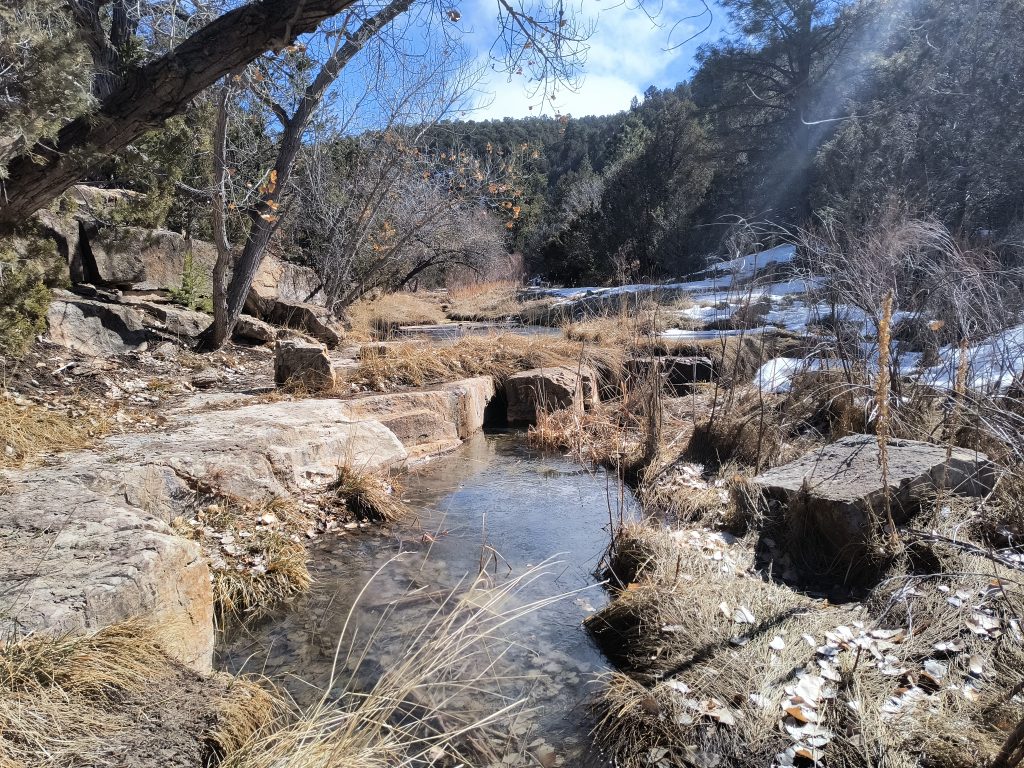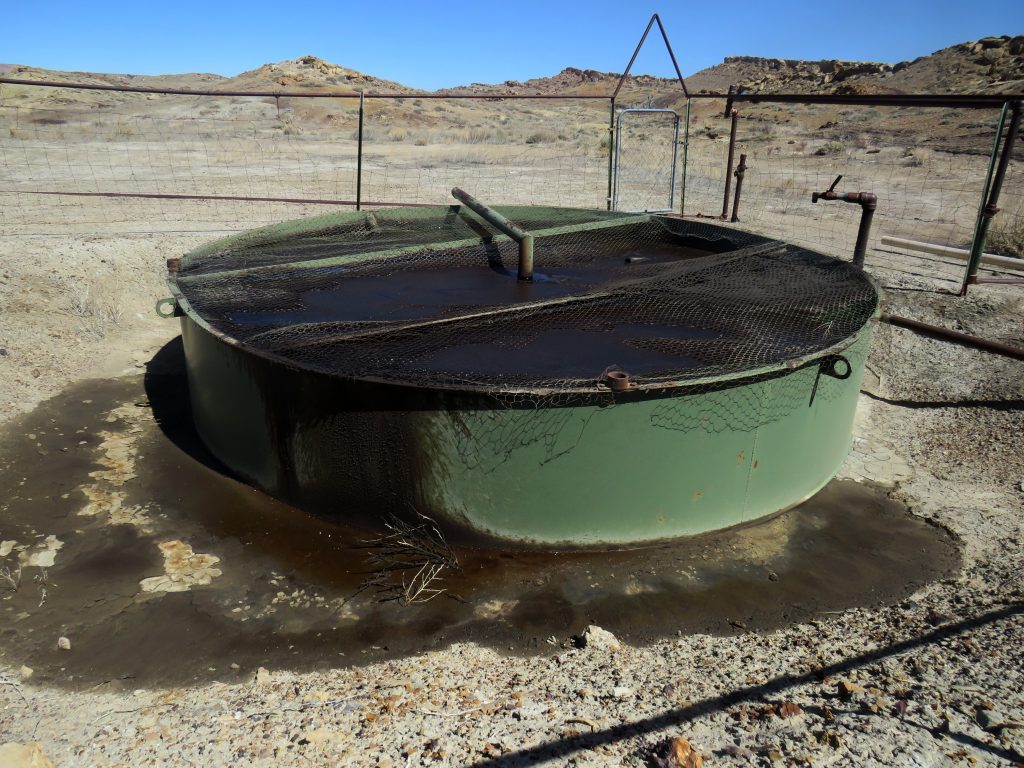The election results are in from the Middle Rio Grande Conservancy District, and progressive candidates continued a trend that began in 2009.
In Bernalillo County, Karen Dunning won with three times the votes of Pat McCraw. The Pueblo of Sandia’s Derrick Lente, now also a state representative, soundly defeated Orlando Lucero. And Bernalillo County’s Joaquín Baca ran unopposed.
The closest race in the district occurred in Socorro County, where Valeria Moore beat out James Lee Martin by just ten votes.
The results are still unofficial.
Related story: The year’s most important election you didn’t know about
NMPR’s recent environment stories:
U.S. steps off international stage, ‘getting out’ of climate accord
Director of Interstate Stream Commission gone from agency
Land commissioner files ‘cease and desist’ order against contender
Land Commissioner files defamation suit against candidate over ad
News, brews and views
Join the discussion about the environment tomorrow night in downtown Albuquerque, and meet other people who care about climate change, water, regulations and public lands.
We’re hosting our second News & Brews event on Thursday, June 8 at the Simms Space in downtown Albuquerque (which offers beautiful views of the city).
This month, the panel will include Ron Curry, former EPA regional administrator and former secretary of the New Mexico Environment Department, science writer Cally Carswell and Theresa Pasqual from the Pueblo of Acoma.
Tickets are free, but must be reserved in advance.
Better! But still terrible
Over Memorial Day weekend, U.S. Forest Service officials found 41 abandoned wildfires on the Santa Fe National Forest.
Last weekend, visitors did a bit better: only four were found. But two of those had escaped their fire rings and would have sparked wildfires if they hadn’t been found in time.
Related story: Fire protection officers strain to keep up with holiday crowds
Gila diversion plans shifting again
The Deming Headlight reports that the entity in charge of planning and building the Gila diversion is planning to once again change its plans.
At its last meeting, the New Mexico Central Arizona Project Entity discussed plans to use water from the diversion to help recharge the Mimbres aquifer, the source of Luna County’s water.
The proposed plan would utilize existing infrastructure that belongs to Freeport-McMoRan, an international mining company that owns mines near Silver City. If approved, the project would use FMM infrastructure to divert water from Bill Evans Lake, west of Silver City, to the east and across the Continental Divide to help recharge the Mimbres aquifer, the source of Luna County’s water.
According to the CAPE’s executive director, Anthony Gutierrez, “The idea of utilizing that infrastructure is for well and aquifer recharge. That has been on several long-term water plans for both municipal and regional water plans.”
In addition to augmenting the Mimbres aquifer, CAPE attorney, Pete Domenici Jr. thinks that water in the FMM system could also benefit irrigators in the upper Gila Valley as well as downstream users the Virden and Redrock area. But in order to pursue this plan, the contract between the CAPE and the Interstate Stream Commission, the Joint Powers Agreement, will need to be amended.
That marks yet another significant change in plans for the diversion.
The Silver City Daily Press’ Benjamin Fisher covered the meeting, too:
Not only will this amended JPA require official New Mexico Interstate Stream Commission approval. Should the ISC approve, it will also require the approval of each individual member of the CAP Entity — including Grant County, the village of Santa Clara and numerous small water and ditch associations.
Domenici said that given past talks with the Freeport-McMoRan administration, the CAP Entity could eventually become long-term lessees or even owners of percentages of the company’s infrastructure or, less likely, water rights.
The next CAP Entity board meeting is July 6.
Brine, plus fraud
Local leaders are unhappy they have to shell out cash for the Carlsbad Brine Well.
That area is in danger of collapsing, due to previous oil drilling activities. The company has since moved on, leaving behind responsibility for the sinkhole, too.
Earlier this year, the New Mexico State Legislature allocated money toward a study to prevent its collapse.
According to a story in the Carlsbad Current-Argus:
County officials said they were “blackmailed” by the state of New Mexico into approving a $125,000 appropriation for studies of the Carlsbad Brine Well to prevent its collapse.
Commissioners said Tuesday they had no other choice but to contribute the funds to get the problem solved, despite their insistence that the state is to blame for the danger posed by the brine well.
Carlsbad and Eddy County leaders said in recent public meetings that the state should take responsibility for the brine well.
The Current-Argus also reports that the FBI is now investigating the theft of nearly $1 million from the Otis Mutual Domestic Water Consumers and Sewage Works Association.
The New Mexico Office of the State Auditor discovered the theft during an annual audit of the association.
According to the story:
The case was initially investigated by the Eddy County Sheriff’s Office, which as of Monday had turned it over to the Federal Bureau of Investigation and U.S. Attorney’s Office.
Special Agent Lisa Hill of the FBI’s Las Cruces field office confirmed the agency is leading the case, but refused to comment on whether charges have been filed or if an arrest warrant was issued.
Transitioning from coal
In partnership with Navajo Nation-based Diné Innovative Network of Economies in Hózhó (DinéHózhó L3C), the Institute for Energy Economics and Financial Analysis has published a transition plan for boosting the economy around the Navajo Generating Station.
Since the owners announced plans to close the coal-fired power plant, ideas for keeping it open have been floated.
The transition plan includes three parts: addressing the short-term needs of existing businesses, creating new jobs and generating income for laid-off workers and replacing revenue for the tribal governments affected by the plant’s closure.
Read the report here.






















